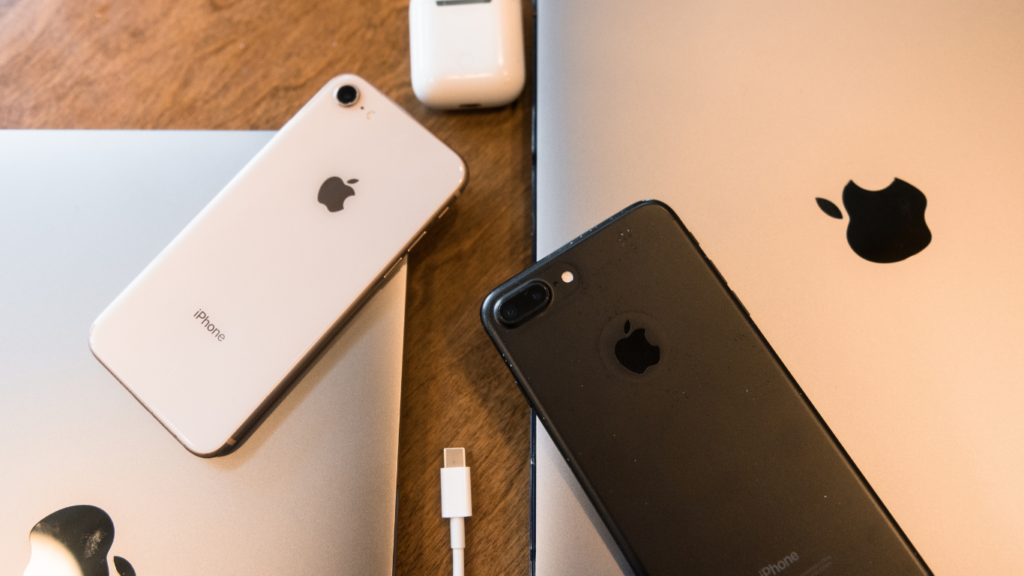Background on Trump’s Tariff Threats
On May 23, 2025, President Donald Trump posted on Truth Social, demanding that Apple and Samsung manufacture their smartphones in the U.S. or face a 25% tariff. He later told reporters the tariff, set to start by June’s end, would apply to any phone maker selling in the U.S. without local production. This follows earlier tariff threats, including a 145% levy on Chinese goods, later reduced to 30%, with smartphones initially exempted. Trump’s goal is to boost U.S. manufacturing, but critics argue it could raise prices and disrupt global trade. The threats have already shaken markets, with Apple’s shares dropping 3% and broader indexes declining.
Trump’s Push for U.S. Manufacturing
Trump’s tariff threats aim to bring jobs back to America. He’s long criticized companies like Apple for producing overseas, especially in China and India. By threatening tariffs, he hopes to force firms to build U.S. factories, creating jobs and reducing reliance on foreign supply chains. He’s offered a carrot: no tariffs for companies that relocate production. However, building new plants takes years, and experts say it’s costly and complex. Trump’s stance reflects his broader trade policy to prioritize American workers in 2025.
Past Tariff Actions
Trump’s tariff strategy isn’t new. In April 2025, he imposed a 145% tariff on Chinese goods, sparking market chaos. After pushback, he paused most tariffs for 90 days and lowered China’s to 30%, exempting smartphones. Earlier, a 20% tariff on Chinese goods tied to fentanyl issues hit Apple hard. These flip-flops show Trump’s aggressive trade approach, using tariffs as leverage in negotiations. His focus on Apple and Samsung marks a shift to targeting specific U.S. companies, raising legal concerns.
Impact on Apple
Apple, heavily reliant on China for 90% of iPhone production, faces significant pressure. Trump’s 25% tariff threat could raise iPhone prices, with estimates suggesting a $1,000 phone could cost $1,250 or more. Apple’s stock fell 3% after the announcement, wiping out $70 billion in value. The company has shifted some production to India, but Trump criticized this move, insisting on U.S. manufacturing. CEO Tim Cook, who met Trump recently, faces a tough choice: absorb costs or pass them to consumers. Apple’s $500 billion U.S. investment pledge may not be enough to avoid tariffs.
Challenges of Moving Production
Relocating iPhone production to the U.S. is no easy task. Analysts, like Dan Ives from Wedbush Securities, call it a “fictional tale” due to the complex Asian supply chain. U.S. production could triple iPhone costs because of higher labor and missing infrastructure. Apple’s main partner, Foxconn, is expanding in India, not the U.S., with a $1.5 billion plant in Chennai. Building U.S. factories would take years and billions, making compliance with Trump’s demands tough by June 2025.
Apple’s Response
Apple has stayed quiet on Trump’s latest threats. CEO Tim Cook, who donated $1 million to Trump’s inauguration, has a history of navigating tariff issues through talks. Apple’s May 1 earnings report estimated $900 million in tariff costs for the quarter. The company is diversifying production, with 20% of U.S.-bound iPhones now made in India. However, Trump’s insistence on U.S. manufacturing puts Apple in a bind, as shifting entirely would disrupt its supply chain and raise costs significantly.
Impact on Samsung
Unlike Apple, Samsung produces most smartphones in South Korea, Vietnam, India, and Brazil, having closed its last China factory in 2019. Trump’s tariffs could still hit Samsung, as its non-U.S. production faces the 25% levy. However, Samsung’s diversified supply chain gives it an edge over Apple. The company’s stock dipped slightly after Trump’s remarks, but its lower reliance on China softens the blow. Samsung must weigh whether U.S. production is worth the cost to avoid tariffs in 2025.
Samsung’s Manufacturing Advantage
Samsung’s move away from China gives it a head start. Its factories in Vietnam and India produce most Galaxy phones, dodging Trump’s earlier China-focused tariffs. Only 10% of its supply chain relies on China for components. However, Trump’s new threat targets all non-U.S. production, including Vietnam (10% tariff) and India. Samsung could face higher costs if forced to build U.S. plants, but its global network makes it less vulnerable than Apple in this trade battle.
Potential Costs for Samsung
If Samsung faces a 25% tariff, phone prices could rise. A $1,000 Galaxy phone might cost $1,250, impacting U.S. sales. Unlike Apple, Samsung’s diverse production sites offer flexibility, but setting up U.S. factories would still be expensive and slow. Analysts warn that higher prices could dampen demand, especially if economic uncertainty grows. Samsung’s ability to absorb costs or shift production slightly may limit the tariff’s impact compared to Apple in 2025.
Consumer Impact
Trump’s tariffs could hit U.S. consumers hard. Higher phone prices—potentially 25% or more—might force buyers to delay upgrades or choose cheaper models. An iPhone or Galaxy costing $1,250 instead of $1,000 could strain budgets, especially with inflation concerns. Consumers rushed to buy iPhones in April when tariffs loomed, showing price sensitivity. If companies pass on costs, demand could drop, hurting sales in the U.S., a key market for both Apple and Samsung in 2025.
Higher Phone Prices
Analysts estimate iPhone prices could rise by $250–$800 per device if tariffs are applied. Samsung phones could see similar hikes. This would make premium phones less affordable, pushing consumers toward budget options or older models. With 80% of Apple’s U.S. iPhone sales tied to China, and Samsung facing levies on Vietnam and India, both companies might pass costs to buyers. This could spark backlash, as seen when Walmart faced similar tariff pressure.
Reduced Consumer Choice
Higher prices could limit options for U.S. buyers. If Apple and Samsung cut production of affordable models to offset costs, consumers might face fewer choices. Smaller brands, also hit by tariffs, could struggle to compete. This might push buyers to delay purchases, impacting the smartphone market. In 2025, economic uncertainty from tariffs could further reduce spending, as people prioritize essentials over pricey gadgets.
Economic and Market Reactions
Trump’s tariff threats rattled markets, with the S&P 500 dropping 0.67% on May 23, 2025. Apple’s 3% stock dip cost $70 billion in value. Investors fear tariffs could slow economic growth and raise inflation, bringing the U.S. close to recession. However, some analysts, like those at Barclays, see the threats as negotiation tactics. Markets have been volatile since Trump’s April tariff announcements, with a brief recovery after exemptions. The uncertainty continues to worry investors in 2025.
Stock Market Volatility
Apple’s shares fell 20% year-to-date due to tariff fears and AI competition concerns. Samsung’s stock saw smaller dips, thanks to its diversified production. Broader markets, including the S&P 500, have swung wildly since Trump’s April 145% China tariff announcement. A 90-day pause calmed things, but the new 25% threat renewed fears. Gold prices rose as investors sought safe assets, while Treasury yields dropped amid economic worries. Markets remain on edge in 2025.
Global Trade Concerns
Trump’s tariffs extend beyond Apple and Samsung, with a 50% levy threatened on EU goods starting June 1. This could disrupt $566 billion in EU exports, like cars and pharmaceuticals. China’s 125% retaliatory tariffs on U.S. goods add to global tensions. Economists warn of a trade war that could raise prices worldwide and slow growth. Trump’s push for U.S. manufacturing ignores the complexity of global supply chains, risking long-term economic damage in 2025.
Industry Challenges
Moving smartphone production to the U.S. is a massive hurdle. Apple and Samsung rely on Asia’s skilled labor, vast supplier networks, and low costs. Building U.S. factories would take years and billions, with no guarantee of efficiency. Steve Jobs once told Obama, “Those jobs aren’t coming back.” Higher labor costs could make phones unaffordable. Other tech firms, like Nvidia, also face pressure, but smartphone exemptions earlier in 2025 gave temporary relief. The industry braces for tough choices.
Supply Chain Complexity
Asia’s supply chain is a web of factories, suppliers, and skilled workers. Apple’s iPhones rely on 90% Chinese assembly, with components from Taiwan and elsewhere. Samsung’s production spans Vietnam, India, and South Korea. Replicating this in the U.S. would require massive investment in infrastructure and training. Analysts estimate a decade-long process, with costs passed to consumers. Trump’s June deadline is unrealistic, putting companies in a tough spot in 2025.
Legal and Policy Issues
Targeting specific companies like Apple raises legal questions. Tariffs aimed at one firm could face court challenges, as they may violate trade laws. Trump’s claim of fairness by including Samsung doesn’t fully address this. His administration’s back-and-forth—exempting smartphones in April, then threatening tariffs now—creates uncertainty. The White House’s push for U.S. manufacturing lacks clear policy on how firms can comply quickly, risking confusion and lawsuits in 2025.
What’s Next for Apple and Samsung
Apple and Samsung face a critical moment. Apple may negotiate with Trump, as Cook did in 2019 to avoid tariffs. Samsung, less exposed, could expand existing U.S. facilities, like its Texas plant. Both might absorb some costs to keep prices stable, but this cuts profits. Long-term, they’ll likely diversify production further, with India and Vietnam as hubs. Trump’s June deadline looms, but his history of pausing tariffs suggests room for talks. The outcome will shape tech in 2025.
Negotiation Possibilities
Trump’s past with Cook shows negotiation is possible. In 2019, Cook secured tariff exemptions through talks. Apple’s $500 billion U.S. investment and Cook’s inauguration donation signal goodwill. Samsung, with less China exposure, might leverage its Texas presence to negotiate. Trump hinted at delays for firms building U.S. plants, suggesting flexibility. If talks succeed, tariffs could be softened or delayed, easing pressure on both companies by mid-2025.
Long-Term Strategies
Apple is ramping up India production, with Foxconn’s $1.5 billion Chennai plant. Samsung already uses Vietnam and India heavily, reducing China reliance. Both may invest in U.S. facilities to appease Trump, but full relocation is unlikely by 2025. Diversifying supply chains globally is their best bet to avoid future tariffs. They’ll also focus on cost-cutting and innovation, like AI features, to maintain market share despite potential price hikes.
Consumer and Industry Advice
Consumers should watch phone prices closely. Buying before June 2025 could avoid tariff-driven hikes. Businesses in tech should diversify suppliers and explore U.S. investments to hedge against tariffs. Investors face risks, as Apple and Samsung stocks may stay volatile. Long-term, firms with flexible supply chains, like Samsung, may fare better. Stay informed on Trump’s trade moves, as exemptions or pauses could shift the landscape. Consulting financial advisors is wise in this uncertain climate of 2025.
Tips for Consumers
If you’re planning to buy a smartphone, act before June 2025, when tariffs may hit. Look for deals now, as retailers might raise prices soon. Consider budget models if premium phones get too costly. Trading in old devices can cut costs. Follow news on tariff exemptions, as Trump’s policies often shift. If prices rise, weigh whether a new phone is worth it or if waiting makes sense in 2025’s economy.
Advice for Investors
Tech stocks like Apple are risky now, with tariffs threatening profits. Samsung may be safer due to its diversified production. Monitor Trump’s trade talks and market reactions. Diversify investments to avoid overexposure to tech. Gold or bonds could hedge against volatility. Keep an eye on quarterly earnings, as Apple’s $900 million tariff cost estimate signals challenges. Long-term, firms adapting to tariffs may recover, but 2025 will be bumpy.
Conclusion
Trump’s 25% tariff threat on Apple and Samsung is a bold move to boost U.S. manufacturing, but it risks higher phone prices and economic fallout. Apple, tied to China, faces bigger challenges than Samsung, with its global production. Consumers could see iPhones and Galaxies cost 25% more, while markets stay volatile. Negotiations or exemptions might soften the blow, but the June 2025 deadline looms. Both companies will likely push for diversified supply chains, while consumers and investors should stay cautious. This trade battle will shape the tech world in 2025.



